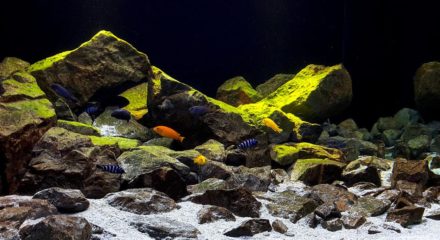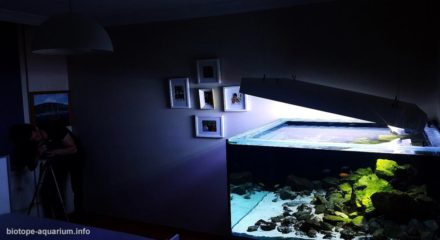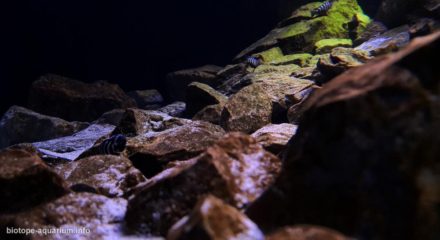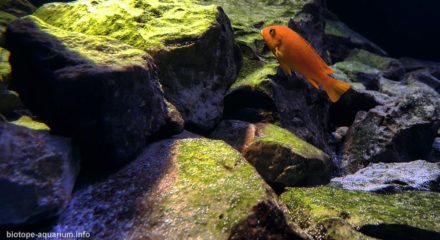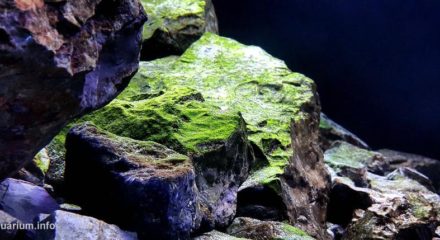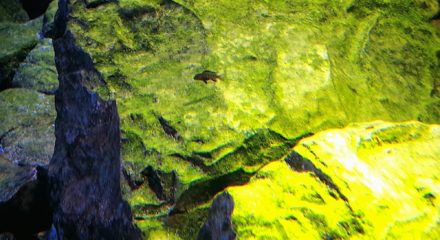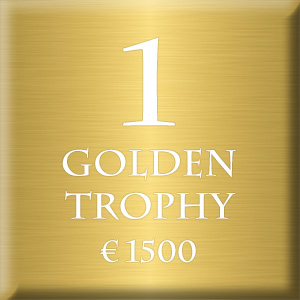 Likoma Island’s rocky habitat, Southeast of Lake Malawi, Mozambique waters
Likoma Island’s rocky habitat, Southeast of Lake Malawi, Mozambique waters
1st place in Biotope Aquarium Design Contest 2016
![]() Turkey. Mert Aykuta
Turkey. Mert Aykuta
Aquarium Volume: 1100 L
Fish and invertebrates: 1 male 3 female Metriaclima sp. “Msobo”, 1 male 3 female Melanochromis cyaneorhabdos “Mangano”, 1 male 2 female Pseudotropheus sp. “Elongatus Ruarwe”, 1 male 3 female Pseudotropheus sp. “Elongatus Mphanga”, 1 male 5 female Labidochromis Caeruleus, 1 male 4 female Pseudotropheus sp. “Demasoni”, 1 male 2 female Cynotilapia Afra “Cobue”, 1 male 2 female Cynotilapia Afra “Hara”, 1 male 2 female Labeotropheus fuelleborni (Maison Reef), and mixed youngs
Plants list: None
Biotope description: Likoma Island is located in southeast of Lake Malawi and is the larger of two inhabited islands, the smaller being nearby Chizulmulu. Likoma and Chizulmulu both belong to Malawi, and together they make up the Likoma District. Both islands lie just a few kilometers from Mozambique, and are entirely surrounded by Mozambican territorial waters. This region has got relatively clear waters and mostly rocky habitats. Common Mbuna species seen there are Melanochromis cyaneorhabdos, Cynotilapia zebrodies (Likoma), Labeotropheus fuelleborni (Likoma), Labeotropheus fuelleborni (Maison Reef), Labeotropheus trewavasa, and Cynotilapia afra, but you can see also all other mbuna species found in Lake Malawi. Mbunas inhabit the rocky shallow areas. They are commonly found over small and medium sized rocks at depths between 10-33 feet (3-10m). They feed zooplankton, epibenthic invertebrates, and aufwuchs. Large rounded rocks provide shelter and a place for the mbunas’ main diet to grow. Aufwuchs in the algae includes microfauna such as small invertebrates. They stick close to the rockwork to avoid the open water piscivores commonly referred to as the haps. Water parameters of Likoma Islands are similar the other regions. Electrical conductivity (μmho = microsiemens): 210-220, Total solids (mg/L) average: 134.4-140.0, Sum of cations (meg/L): 2.45, Sum of anions (meq/L): 2.5-2.59, Total hardness as calcium carbonate CaCO3 (mg/L): 60.8-85.60, Total calcium as calcium carbonate CaCO3 (mg/L): 41.0-49.0, Total magnesium as calcium carbonate CaCO3 (mg/L): 19.58-36.60, pH: 7.9-8.5, Na (sodium) (mg/L): 21.0, K (potassium) (mg/L): 6.4, Ca (calcium) (mg/L): 16.4-20.7, Mg (magnesium) (mg/L): 4.7-8.8, Alkalinity as calcium carbonat CaCO3 (mg/L): 118.0-129.0, HCO3+CO3 (bicarbonate, carbonate) (meq/L): 2.36-2.58, Alkalinity as HCO3+CO3 (bicarbonate, carbonate ions) (mg/L): 71.98-78.69, Cl (chloride) (mg/L): 3.57-4.3, SO4 (sulfate) (mg/L) (using ion-exchange resins): 5.5, SiO2 (dissolved silica) (mg/L): 1.1-4 ,PO4· P (phosphate)(μg/L): <7-30 Temperatures: 23°C-28°C
Fish and invertebrates: 1 male 3 female Metriaclima sp. “Msobo”, 1 male 3 female Melanochromis cyaneorhabdos “Mangano”, 1 male 2 female Pseudotropheus sp. “Elongatus Ruarwe”, 1 male 3 female Pseudotropheus sp. “Elongatus Mphanga”, 1 male 5 female Labidochromis Caeruleus, 1 male 4 female Pseudotropheus sp. “Demasoni”, 1 male 2 female Cynotilapia Afra “Cobue”, 1 male 2 female Cynotilapia Afra “Hara”, 1 male 2 female Labeotropheus fuelleborni (Maison Reef), and mixed youngs
Plants list: None
Biotope description: Likoma Island is located in southeast of Lake Malawi and is the larger of two inhabited islands, the smaller being nearby Chizulmulu. Likoma and Chizulmulu both belong to Malawi, and together they make up the Likoma District. Both islands lie just a few kilometers from Mozambique, and are entirely surrounded by Mozambican territorial waters. This region has got relatively clear waters and mostly rocky habitats. Common Mbuna species seen there are Melanochromis cyaneorhabdos, Cynotilapia zebrodies (Likoma), Labeotropheus fuelleborni (Likoma), Labeotropheus fuelleborni (Maison Reef), Labeotropheus trewavasa, and Cynotilapia afra, but you can see also all other mbuna species found in Lake Malawi. Mbunas inhabit the rocky shallow areas. They are commonly found over small and medium sized rocks at depths between 10-33 feet (3-10m). They feed zooplankton, epibenthic invertebrates, and aufwuchs. Large rounded rocks provide shelter and a place for the mbunas’ main diet to grow. Aufwuchs in the algae includes microfauna such as small invertebrates. They stick close to the rockwork to avoid the open water piscivores commonly referred to as the haps. Water parameters of Likoma Islands are similar the other regions. Electrical conductivity (μmho = microsiemens): 210-220, Total solids (mg/L) average: 134.4-140.0, Sum of cations (meg/L): 2.45, Sum of anions (meq/L): 2.5-2.59, Total hardness as calcium carbonate CaCO3 (mg/L): 60.8-85.60, Total calcium as calcium carbonate CaCO3 (mg/L): 41.0-49.0, Total magnesium as calcium carbonate CaCO3 (mg/L): 19.58-36.60, pH: 7.9-8.5, Na (sodium) (mg/L): 21.0, K (potassium) (mg/L): 6.4, Ca (calcium) (mg/L): 16.4-20.7, Mg (magnesium) (mg/L): 4.7-8.8, Alkalinity as calcium carbonat CaCO3 (mg/L): 118.0-129.0, HCO3+CO3 (bicarbonate, carbonate) (meq/L): 2.36-2.58, Alkalinity as HCO3+CO3 (bicarbonate, carbonate ions) (mg/L): 71.98-78.69, Cl (chloride) (mg/L): 3.57-4.3, SO4 (sulfate) (mg/L) (using ion-exchange resins): 5.5, SiO2 (dissolved silica) (mg/L): 1.1-4 ,PO4· P (phosphate)(μg/L): <7-30 Temperatures: 23°C-28°C
Photo Gallery
Comments of the members of the jury of Biotope Aquarium Design Contest 2016
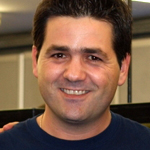
It is amazing. It is one of the most beautiful African rift-lake biotopes that I have ever seen. And it is the best of the African lake rockscape in the competition. Also this biotope aquarium has a unique technique to setup the rocks, very realistic and aesthetic. It is a real pleasure to see this biotope aquarium. Only objection is the hybridization between species of hosts.

I like the rock placement, species choice, tank dimensions and fish colour in this biotope aquarium, which combine to form a very natural looking scene. Instead of large, overgrown specimens with pale colours pacing up and down the tank, like in so many Malawi cichlid tanks, these specimens look small, colourful, and genetically distinct from each other and composed in such a way in the photograph that they look like they would in nature.

Another example of great hardscape and very natural looking bottom. I like the size of this tank (one of very few tanks entered into this year’s contest which is not too small for the composition of fishes), and also the proportions – long, wide and low, which allows to create bottom rich in hideouts.

Another superb tank with huge proportions. One more time, the african biotype are very well represented. this layout really impressed me, because the rocks are disposed with a good natural sensation. Adequate quantity of fishes and well choosed. The best detail in my opinion is the green surface in the rocks… Natural rules. Good job!!!
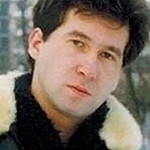
It is a great job. I have got a feeling that all photos were taken not in an aquarium, but in nature. And the volume of it is appropriate to create an interesting community.

This biotope aquarium has the WOW factor. The size, type and preparation of the parent rock is so unique and placed so strategically that I sat and understood that it was looking at a groundbreaking layout. If I had a Lake Malawi biotope aquarium, I would definitely want it to look like this! It is perfect.
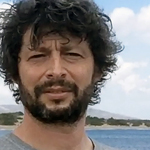
It is a large-scale, bright, spacious entry. Landscape of Lake Malawi is mainly poor: rocks, sand, a lot of freedom. Often there are two types of aquaria imitating the lake. The first is featureless, uninteresting aquaria, there are hundreds of them online: stones simply scattered on the sand. The second type is artificial art aquaria. It seems that the stones were placed by a professional architect or sculptor. This aquarium is a golden mean. I suppose that it looks amazingly live. I like the green surface of the stones. It is one of the main features of this aquarium. It looks very natural and decorate this aquarium very much. I would like to put on flippers and see what is behind those rocks.

